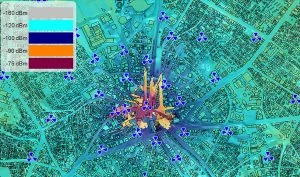The networking of physical objects is often cited as one of the most fascinating aspects of the Internet of Things (IoT). But what does this mean for the economy and for the supply chain in particular?
In a recent article, Cisco predicted that the IoT will have a significant impact on logistics. They estimate that companies using IoT-enabled logistics will achieve improvements in speed, accuracy and transparency.
This could potentially revolutionize the way goods are transported and delivered. So what opportunities are there for companies to exploit the potential of IoT in logistics? Read on and find out!
Since when has IoT been used in supply chain management?
The term "Internet of Things" was coined by Kevin Ashton in 1999, but the concept of connected devices goes back much further. In fact, the first industrial IoT applications were developed in the 1970s when manufacturers began using RFID tags for inventory tracking.
Since then, the use of IoT technology in supply chain management has steadily increased. Today, IoT devices are used for a variety of tasks, such as tracking inventory levels, monitoring asset performance and detecting security threats.
The benefits of IoT are enormous and the potential for further innovation is considerable. As technology continues to evolve, it is likely that the role of IoT in supply chain management will become even more important.

Why and how was the IoT used in the supply chain?
In short, the Internet of Things (IoT) is the connection of physical objects to the internet. This means that everyday objects can now collect and exchange data, making them 'smart'. The supply chain is one of the many areas that has been transformed by IoT technology.
By attaching sensors to products, manufacturers and retailers can track items throughout the supply chain, from production to delivery to the customer's doorstep. This has many benefits, such as reducing losses and waste, improving customer service and increasing efficiency.
In addition, the data collected by IoT devices can be used to improve future planning and decision making. As the technology continues to develop, it is likely that even more applications for the IoT will be found in the supply chain.
5 outstanding advantages of IoT in the supply chain
As companies strive to improve supply chain management and increase efficiency, many are turning to IoT for help. By connecting devices and systems throughout the supply chain, the IoT can provide valuable data that can help reduce waste, optimize inventory and improve customer service.
Authentication of the location of goods / vehicles at any time.
The potential applications of IoT are almost limitless. One of the most promising is the ability to track the location of goods and vehicles in real time. This enables companies to authenticate the location of their products at any time and ensure that they are not counterfeited or stolen.
In addition, the IoT can help optimize supply chains by reducing the need for manual inventory management. By tracking the location of goods and vehicles, companies can save time and money while improving the accuracy of their data.
Tracking the speed of movement and the time of arrival of the goods.
By attaching sensors to goods in transit, companies can track the speed of their movement and time of arrival with unprecedented accuracy.
This information can then be used to optimize routes, plan deliveries and manage inventory. In this way, IoT helps companies to optimize their processes and improve their customer service.
Monitoring the storage conditions of raw materials and products.
The technology is increasingly being used in various industries, including food and beverage, to monitor the storage conditions of raw materials and products. By connecting storage facilities to the Internet, companies can track temperature, humidity and other environmental conditions in real time.
This helps to ensure that products are stored in optimal conditions and reduces the risk of spoilage. In addition, the IoT can also be used to monitor the movement of goods within a facility and track stock levels.
Streamlining problematic movement of goods.
However, transporting goods from one place to another is often problematic. Delays and interruptions can lead to significant financial losses. The Internet of Things offers a solution to these problems.
By connecting devices and sensors, the Internet of Things can provide real-time information about the location and status of goods. This information can be used to streamline the transportation of goods and avoid delays.

Localization of goods in the warehouse.
The Internet of Things is a network of physical objects connected to the Internet. This technology can be used to track the location of goods in a warehouse. When companies know the location of goods, they can save time they would otherwise spend searching for items.
Manage the goods immediately after their arrival.
The IoT can help you to manage your goods more efficiently, whether you work in a warehouse or in retail. With sensors that track the location of products, you can ensure that they are always where they are supposed to be.
You can also use RFID tags to track inventory and determine when items need to be replenished. In addition, the Internet of Things can provide real-time data about the condition of your goods, so you can take immediate action if problems arise. By using the Internet of Things to track your inventory, you can reduce losses and ensure that your shelves are always well stocked.
Conclusion: IoT in the supply chain
So what is the first step to implementing IoT in your supply chain? The answer may vary depending on your specific needs and business model, but there are a few key considerations that will help you get started.
Understanding how the IoT can benefit your business and planning the necessary infrastructure upgrades are important steps on the road to success. With the right preparation, you can significantly improve efficiency and visibility across your supply chain. Are you ready to make the switch to IoT?




